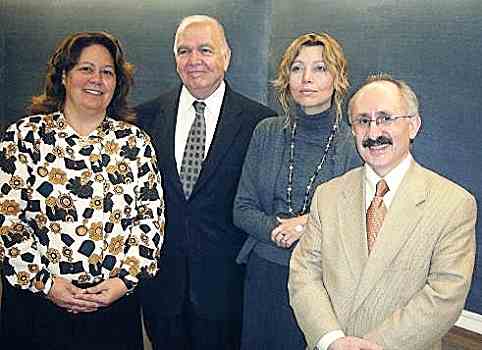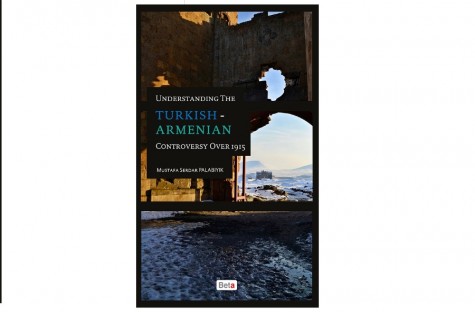On 21 April, an article titled “Bahaettin Şakir’in Ermenilerin imhasına dair mektupları” [Bahaettin Şakir’s letters regarding the annihilation of the Armenians] written by Taner Akçam was published in the Agos Newspaper. In the article, Akçam claims that two forged letters published by Aram Andonian and attributed to Bahaettin Şakir are genuine documents and explains it through the similarity between the Bahaettin Şakir’s signatures in the Andonian letters and the real signatures in his writings and letters. In previous AVİM publications, it has been shown how Akçam’s book, which was published with the aim of validating the Andonian documents, makes various falsifications and how he distorts the statements of Şinasi Orel and Süreyya Yuca by taking them out of their contexts. Akçam thereby attempts to portray himself as the legitimate scholar by distorting the arguments of those contradicting his views.[1]
As always Akçam’s claims and explanations are full of misleading statements and serious shortcomings and his arguments reveal serious contradictions.
First, although there is a rough similarity between the forged signatures and the samples of the real signatures in appearance, when the signatures are examined thoroughly, it becomes evident that there are critical differences between the real signatures and the ones in the Andonian documents. In the left column of the table presented below, there are samples of the real signatures of Bahaettin Şakir Bey. In the right column, there are the forged signatures in the fake letters that were accredited to Bahaettin Şakir Bey. In order for the readers to better see the differences between the two signature groups, the different parts of the real signature samples that are not included in the forged samples are marked with red circles.
.jpg)
As can be seen clearly from the table, there are critical differences between the real and forged signatures and it becomes evident that there was an attempt to imitate the forged signatures by modelling the real ones.
At this point, certain questions might arise regarding the grounds on which Bahaettin Şakir’s signatures might be copied or imitated. However, Bahaettin Şakir’s signature was well known by the Ottoman public due to him being among the prominent figures of the Committee of Union and Progress and him having written open letters (with his signatures appended) to various media organs of the Young Turks. Therefore, anyone interested in forging documents to earn money would be able to check the newspapers and journals of the period and imitate Bahaettin Şakir’s signature. For instance, a signature of Bahaettin Şakir Bey was very visibly and clearly published in an issue of the Şura-yı Ümmet newspaper (published between 1902-1910). Below is a copy of the newspaper’s relevant page with Bahaettin Şakir’s signature circled in red color.
.jpg)
Therefore, it should not be surprising that the signatures in the forged signatures group are roughly similar to the real signatures to some extent.
Furthermore, the difference between the real signatures and forged signatures is not the only indicator that these signatures are forged. The letters in the Andonian documents are also inconsistent in terms of geographic location and chronology. Two letters, dated February and March 1915 attributed to Bahaettin Şakir Bey, allegedly sent from Istanbul to Adana creates a great dilemma that is impossible to explain for Akçam. Because, during the dates that the letters were allegedly sent, Bahaettin Şakir was not present in Istanbul since he was in Erzurum at the time. Akçam’s article in the daily Agos, which has recently become the voice of the distorted Armenian narrative, accepts the fact that Bahaettin Şakir was in Erzurum during those dates and that he did not return to Istanbul until April 1915. However, Akçam entirely ignores the fact that letters were allegedly sent from Istanbul, and overlooks this colossal contradiction that demonstrates the fake nature of the documents and insists on his baseless claims that the documents must be genuine.
The detailed comparison of the signatures in the letters and a detailed examination of the letters’ content and dates reveal without any room for doubt that the Andonian Documents are fake. Akçam’s article in Agos does not go beyond a desperate attempt to salvage documents by distorting the sources he uses as he always does.
[1] Ömer Engin Lütem & Yiğit Alpogan, “Review Article: Killing Orders: Talat Pasha’s Telegrams and the Armenian Genocide.” Review of Armenian Studies, Issue 37 (2018).
© 2009-2025 Center for Eurasian Studies (AVİM) All Rights Reserved

.jpg)
.jpg)
 RENEWED EFFORTS TO MANIPULATE PUBLIC AND SCHOLARLY DISCOURSES ON THE ARMENIAN QUESTION BY FINANCIAL MEANS
RENEWED EFFORTS TO MANIPULATE PUBLIC AND SCHOLARLY DISCOURSES ON THE ARMENIAN QUESTION BY FINANCIAL MEANS
 FURTHER QUESTIONS ON THE INTEGRITY OF WATS ORGANIZERS
FURTHER QUESTIONS ON THE INTEGRITY OF WATS ORGANIZERS
 OBITUARY: MAVERICK HISTORIAN AND TURKEY’S GREAT FRIEND NORMAN STONE PASSED AWAY
OBITUARY: MAVERICK HISTORIAN AND TURKEY’S GREAT FRIEND NORMAN STONE PASSED AWAY
 BEDROS ŞİRİNOĞLU IS ON THE TARGET
BEDROS ŞİRİNOĞLU IS ON THE TARGET
 APRIL 30, 2015 SYMPOSIUM ON "PROSPECTS OF TURKISH-ARMENIAN RELATIONS", OPENING SPEECH AND CLOSING REMARKS
APRIL 30, 2015 SYMPOSIUM ON "PROSPECTS OF TURKISH-ARMENIAN RELATIONS", OPENING SPEECH AND CLOSING REMARKS
 BOOK LAUNCH-UNDERSTANDING THE TURKISH-ARMENIAN CONTROVERSY OVER 1915
BOOK LAUNCH-UNDERSTANDING THE TURKISH-ARMENIAN CONTROVERSY OVER 1915
 HISTORIC MEETING BETWEEN PRESIDENT XI OF PRC AND PRESIDENT MA OF ROC TAKES PLACE IN SINGAPORE
HISTORIC MEETING BETWEEN PRESIDENT XI OF PRC AND PRESIDENT MA OF ROC TAKES PLACE IN SINGAPORE
COURT VERDICTS AGAINST ARMENIANS ARE BECOMING THE RULE
 SASSOUNIAN PAROLE IS AGAIN ON THE AGENDA
SASSOUNIAN PAROLE IS AGAIN ON THE AGENDA
 THE SECOND INTERNATIONAL SYMPOSIUM ON TURKISH-ARMENIAN RELATIONS AND GREAT POWERS ORGANIZED BY ATATÜRK UNIVERSITY IN ERZURUM ENDS TODAY
THE SECOND INTERNATIONAL SYMPOSIUM ON TURKISH-ARMENIAN RELATIONS AND GREAT POWERS ORGANIZED BY ATATÜRK UNIVERSITY IN ERZURUM ENDS TODAY




























